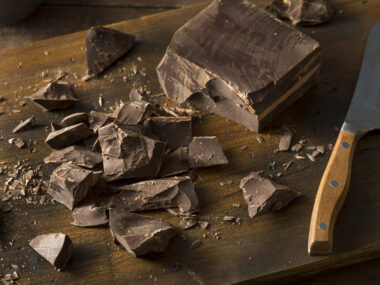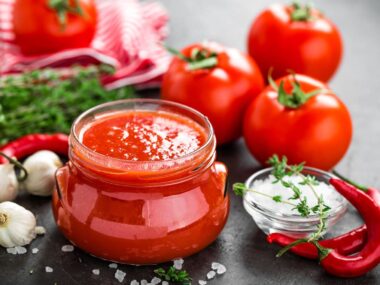Chorizo is your favorite sausage but every time you are preparing it, it turns out undercooked or overcooked. And if you don’t know which is the best way to prepare it, this article is for you.
First of all, there are a few things to consider like cooking time and temperature as well as the color and texture of the chorizo sausages after cooking to know when chorizo is done.
Chorizo is a type of sausage usually prepared with pork meat and seasonings. They are also sold as fresh, semi-cured, and cured. And they all have a unique color and flavor.
Types Of Chorizo Sausages
There are many types of chorizo with different ingredients. You can find chorizo sausages made with beef, turkey, or chicken meat instead of pork, and other ingredients.
Chorizo sausages can include smoked paprika, garlic, salt, chili peppers, herbs, vinegar, or white vine, etc. These ingredients are stuffed into pork intestines or artificial casings and are combined in one delicious product with a characteristic flavor.
Chorizo sausages depending on how they are made are usually used in stews, soups, and cooked dishes. But they can be also eaten as a snack or appetizer, fried, grilled, baked, or simmered in apple cider or alcoholic beverages, and as a substitute for ground meat.
There are many local varieties of chorizo sausages made in Mexico, Portugal, Spain, and Central America. They are made differently in each country and have different names.
Portuguese and Spanish chorizo, for instance, doesn’t need to be cooked because they are smoked or cured. However, if you use other types of chorizo sausage such as Mexican, you have to cook it before eating.
You can choose a spicy or sweet chorizo sausage depending on the type of paprika used for its production. However, whatever type of fresh or semi-cured chorizo sausage you use, you have to prepare it in the right way, so you could enjoy its flavor to the fullest.
Let’s learn more about these popular sausages and how to cook them properly!
How Do You Know When Chorizo Is Done?
Cured or smoked chorizo doesn’t need to be cooked. However, this is not the case with fresh and semi-cured chorizo. This type of sausage needs to be cooked properly to be safe for eating.
Therefore, the way you are going to cook chorizo depends on the type of chorizo you are using. The best way to know when chorizo is done is to pay attention to the next things.
1. Cooking time
The cooking time for chorizo depends on the way you are going to cook it and what type of chorizo you are using.
The whole chorizo is cooked longer than the crumbled and sliced chorizo. You can cook chorizo in a pan, oven, or on a grill.
If you are cooking chorizo in a pan on the stovetop, remove the casing if it has one. Then add 5-6 tablespoons of water to the hot pan and cover it with a lid.
Cook the chorizo on medium-high heat for 10-15 minutes turning it occasionally. Remove the lid and cook for additional 5-7 minutes until it is nicely browned and all the fat is rendered out.
You can also cook chorizo in the oven. First, preheat the oven at 400 °F-204 °C. Put the chorizo in the skillet add some oil and place it in the oven.
Cook for 20-30 minutes turning it at half of the cooking time. You can also add some onions, garlic, and herbs like oregano, thyme, or rosemary for better flavor.
Grilling is a great way to give a smoky flavor to your chorizo. Grill the chorizo for 15-20 minutes until it is fully cooked.
Just don’t forget to turn it in every 2-3 minutes so it gets a nice brown color all over.
2. Cooking temperature
The cooking temperature is different for each cooking method.
Chorizo is cooked in the oven at 400°F-204 °C. However, if you are cooking chorizo in a pan or on the grill you need to prepare it at medium-high heat.
One common thing in all these methods is the internal temperature of the fully cooked chorizo that has to be 160°F.
Use a food thermometer and make sure that your chorizo is cooked and ready to serve.
3. Color
Spanish chorizo has a deep red color from the smoked paprika, also known as pimento. However, there are types of chorizos with light red, brown, or even green color because of the ingredients used for its preparation.
You can know that chorizo is done if it changes its color to deep red or light brown. All the fat and juices from the chorizo will come out into the pan and start to caramelize. This is a good sign that your chorizo is ready to serve.
4. Texture
The texture of the chorizo can be different depending on the type of sausage.
Mexican chorizo has a soft texture, while other types of chorizo like Spanish have a coarse, and hard texture. When a fresh type of chorizo is cooked, it has a similar texture to cooked ground meat-solid and crumbly, and it is hard to mold it.
The texture of the cooked semi-cured chorizo is solid and easy to crumble.
How Long Does Chorizo Take To Cook?
Chorizo has a different cooking time depending on the cooking method and type of chorizo.
Chorizo cooked in the oven needs 20-30 minutes. However, if you are cooking chorizo on the stove or grill you will need 15-20 minutes. It is very important to cook chorizo until it changes its color and its internal temperature reaches 160°F.
Have in mind that sliced and crumbled chorizo cooks faster than the whole chorizo link. So, you will need less time to prepare them.
Why Is Chorizo So Runny?
Chorizo is runny because it contains a high amount of fat.
However, you can easily drain the fat and use it to cook vegetables or make some other type of dish. If you don’t want to use the fat drained from the chorizo, you can simply throw it away.
Final Tips
When you are cooking chorizo sausage it is very important to cook it properly. Otherwise, it can easily become overcooked and dry. We highly suggested using a cooking thermometer.
That way, you can measure the internal temperature of the meat to ensure it is fully cooked and safe to eat. Or you can use the tips above and prepare a perfectly cooked chorizo in no time.


